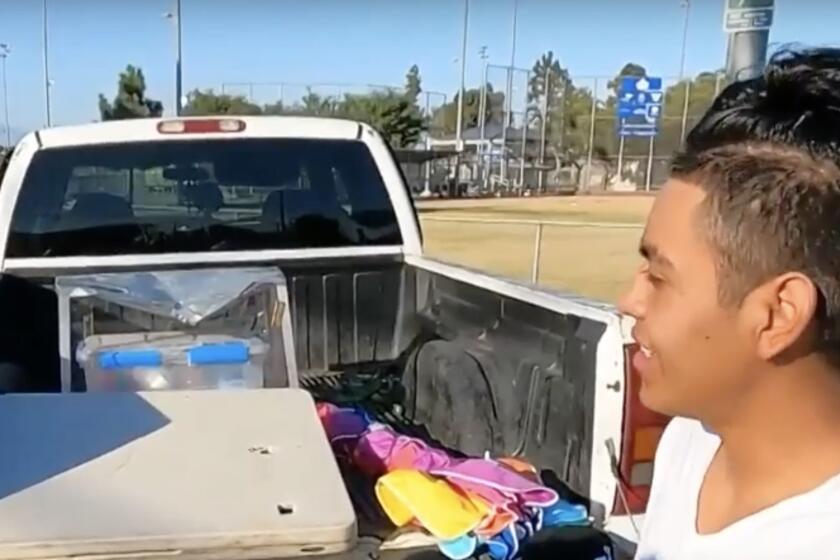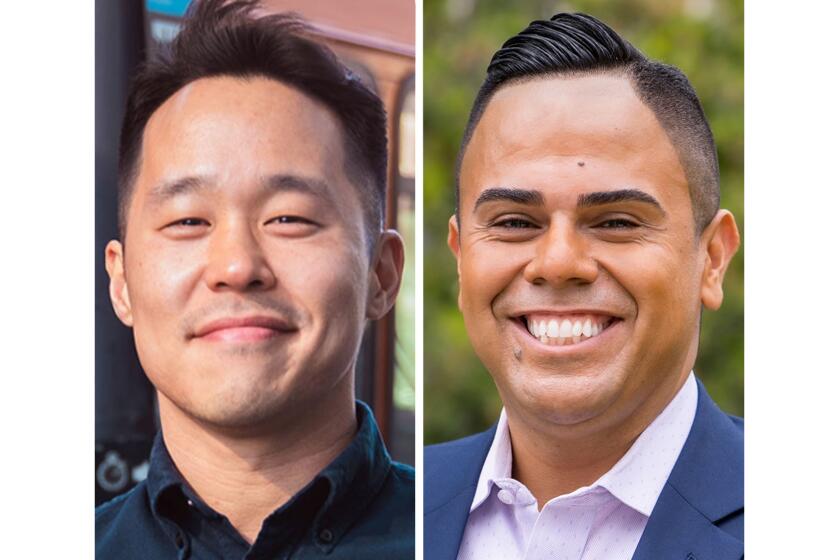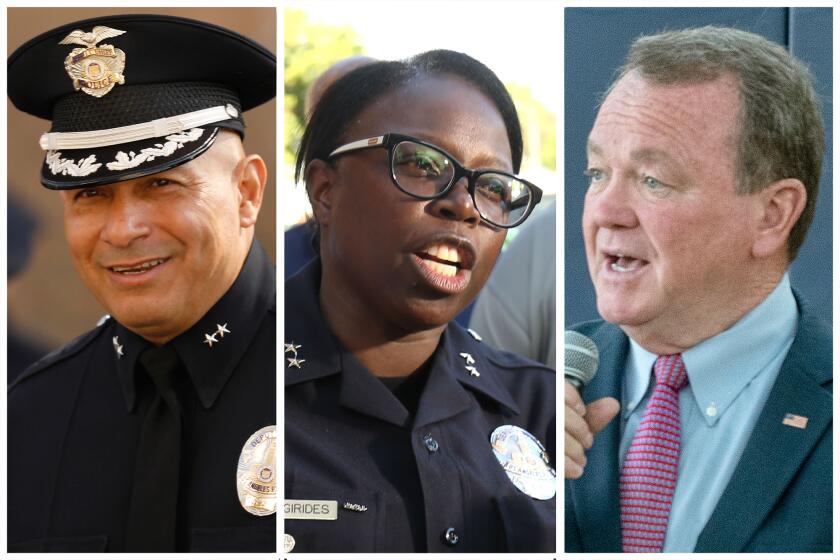Jerrianne Hayslett: Trials and errors
Fourteen years ago today -- shock and awe. After 16 tawdry months of the Simpson case wallpapering the public square, a Los Angeles criminal court jury found O.J. Simpson not guilty of the hideous murders of his ex-wife, Nicole, and her friend, Ron Goldman.
The trial made a lot of people famous, but one of its insiders is someone you’ve probably never heard of: Jerrianne Hayslett. As the information officer for the Los Angeles Superior Courts, she danced a daily minuet between the media and the courts, and every reporter, photographer and news technician among the hundreds who buzzed around the trial wanted her ear and her help. A onetime city editor of the Pasadena Star-News, she took the court job in 1991 and retired in 2002. Every night during the Simpson trial, she dictated an audio journal on her hourlong drive home. It was a way to spare her husband from having to hear her vent about it -- and eventually it was the basis of a book, “Anatomy of a Trial: Public Loss, Lessons Learned from the People vs. O.J. Simpson.” These days, she advises courts in countries such as Slovenia, Indonesia and Serbia about dealing with the media in their own trials. But there’ll never be another Simpson trial. Will there?
What was the verdict day like for you?
Shock when [Judge Lance] Ito’s clerk read the verdicts. I expected a hung jury and wasn’t prepared for acquittals. After the verdicts, myriad questions, including one from a veteran reporter who asked when the verdicts would be appealed! Feeling at loose ends when I learned that the jurors, instead of participating in a news conference, were making appearances with the media [through agents]. Finally, a feeling of letdown as I mopped up; to be so completely focused and wound up so tightly and to have it end so abruptly.
What prepared you for the job?
Nothing! [The courts] had never had a public information officer before, so they wanted somebody who understood the news media. The McMartin preschool trial, the Latasha Harlins killing -- they felt like they were just overrun. They wanted somebody to explain [the media] to the judges and explain the courts to the media. Having gone through the Rodney King beating, the Menendez brothers, Heidi Fleiss, Reginald Denny beating, when the Simpson case came, I thought, “Well, I’m ready, I know what I’m doing,” and it was like being smacked by a tsunami.
Who had more misconceptions about the other, the courts or the news media?
Oh dear. I really think the courts had more of a misconception simply because they had less exposure to the media.
Vincent Bugliosi, the former L.A. assistant district attorney who prosecuted Charles Manson, told me that if televised trials are educational, then show a traffic case, some humdrum process, not a sensational murder trial.
I understand where he’s coming from. Simpson truly was an anomaly, and that’s what gets broadcast and seen as the norm, when it’s not. I believe cameras should be in every courtroom. [People] should have access to their courts. We no longer live in a society where everyone can hang out in the galleries of the courthouse during a trial. And I think that television or a webcast has become a town square. I truly believe if that happened, then the spectacle stuff would recede to some extent.
You’ve interviewed Judge Ito about what went on with the media. His decisions have been criticized, including his giving a TV interview about his parents’ experiences in an internment camp and greeting Larry King in his chambers.
I want to say this in a way that doesn’t sound like I’m his defender in chief, but I think he was grossly misperceived. The interview was certainly a big mistake, and he realized it after the fact. He did that with the best intentions, to educate people about the Japanese American intern[ment] in World War II. He put out all of these conditions [on the interview’s use] -- and KCBS violated all of those conditions.
And Larry King?
I think everybody was culpable in making mistakes, and Larry King was mine. King did a number of accommodating things so far as the trial and Judge Ito were concerned. [For example,] Judge Ito asked news organizations [to] hold off on interviews with Faye Resnick [Nicole Simpson’s friend, whose book on her was published as the trial began] until he could get the jury sequestered, and Larry King was the only one who did. So his folks called one day; could he get a seat in the trial? I suggested, “How about just shaking his hand and saying thank you?” So I arranged for King to be in his chambers to meet him. I took him in through the back hallways, [but] Larry goes to the back door of the courtroom and he’s waving to everybody. Unfortunately, Judge Ito is the one who got the mud splattered on him, and it was my doing.
What was the weirdest thing a reporter ever asked you?
The classic was a Court TV reporter named Kristen Jeanette-Meyers. She asked me what the jurors did during their conjugal visits.
Did you sometimes feel like you were running a day-care center?
Occasionally a judge would say, “Jerrianne, what are the children up to today?” I didn’t feel that way. These are people who had jobs to do under difficult circumstances. I didn’t agree with things some of them did. They had marching orders. Trials are slow and kind of plodding, and so they needed something to fill the gap. But trying to keep a handle on it ...
Part of your book’s title is “Public Loss.” What did the public lose?
Their ability to access the courts through cameras. There have been restrictions placed on public access to proceedings -- gag orders, sealed documents, closed hearings and so forth. I think by having less access, they have less understanding of how our public institutions work. This really disturbs me too: The public felt a loss of confidence in not just the courts but in the news media.
Simpson’s was called “the trial of the century” -- but why doesn’t it still engage people the way we thought it would?
I think it was the trial last year in Las Vegas. I really think when he was convicted and sentenced [there] everybody dusted their hands and said, “Good riddance, you finally got what you should have gotten 15 years ago; we’re done with you.”
You went there a couple of times. Did he recognize you?
He did. I never spoke to him in Los Angeles -- it was inappropriate. In Las Vegas, he was coming out of the courtroom one day as I was going in, and we met right in the doorway. He said hi, and I said hi. What do you say after that?
patt.morrison@latimes.com.
This interview was edited and excerpted from a longer taped transcript. Archive: latimes.com/pattasksMore to Read
Sign up for Essential California
The most important California stories and recommendations in your inbox every morning.
You may occasionally receive promotional content from the Los Angeles Times.











